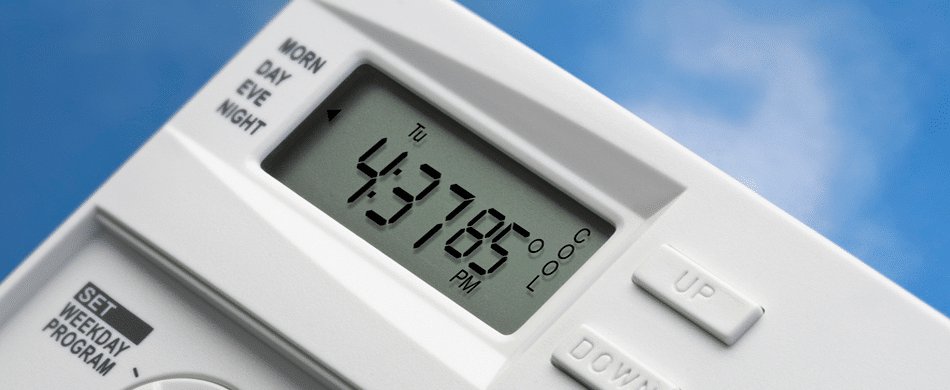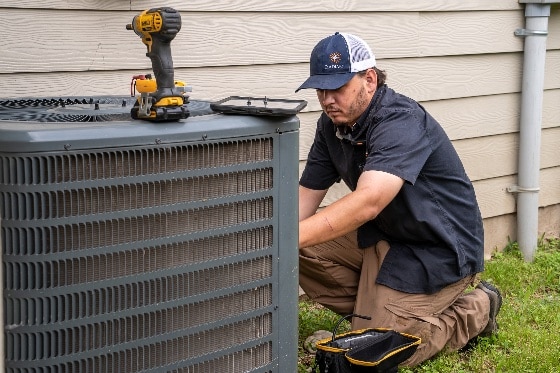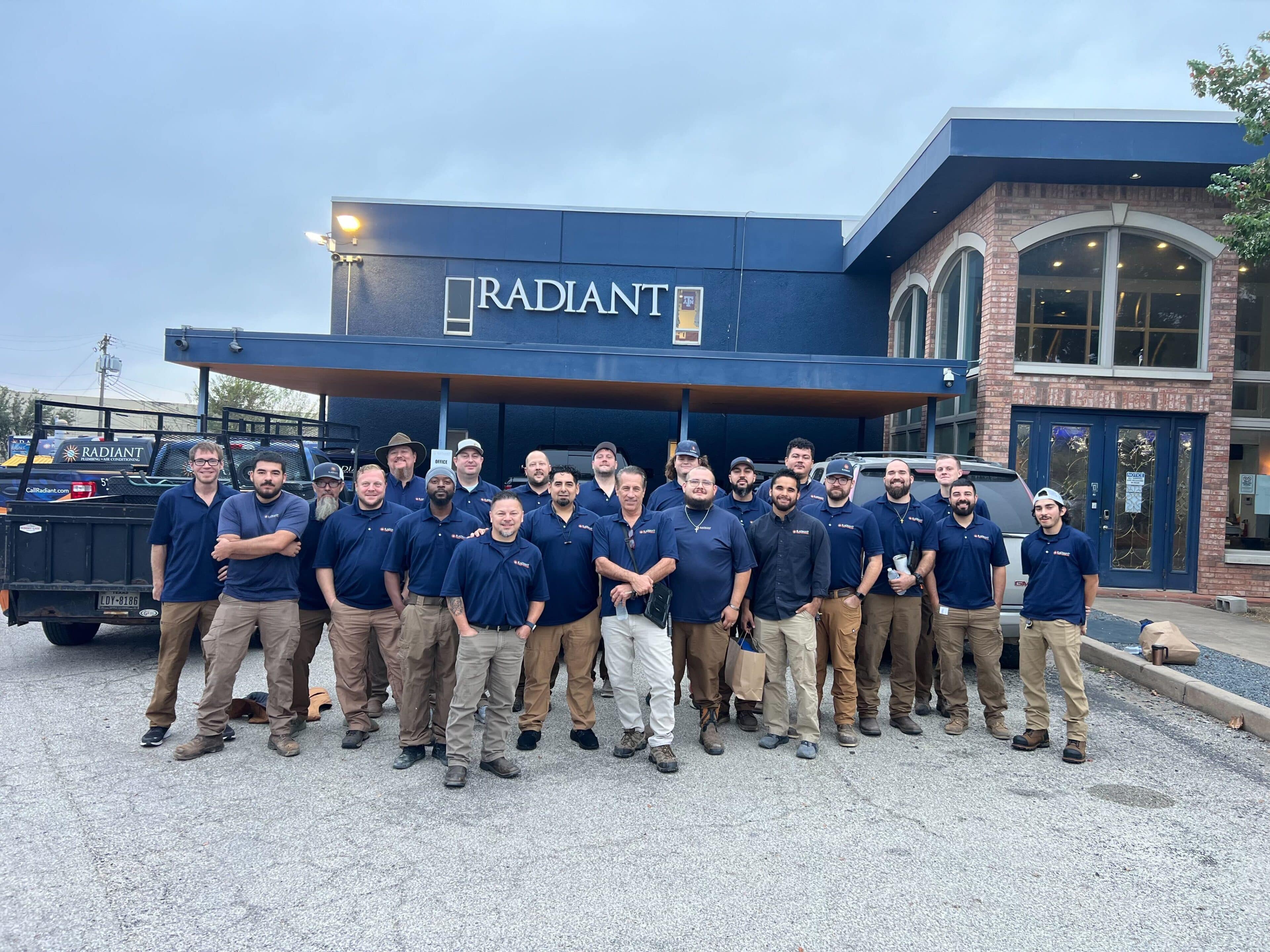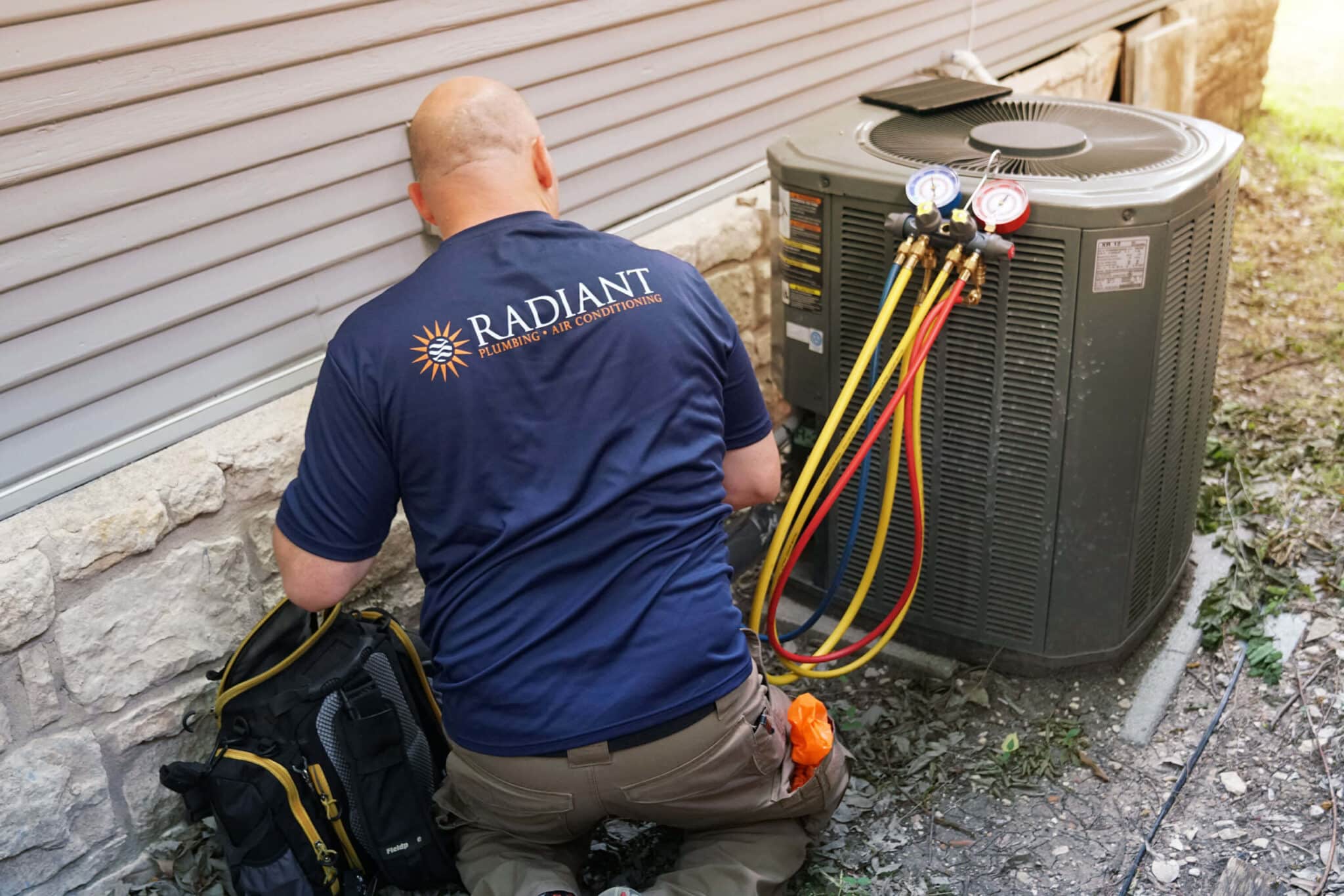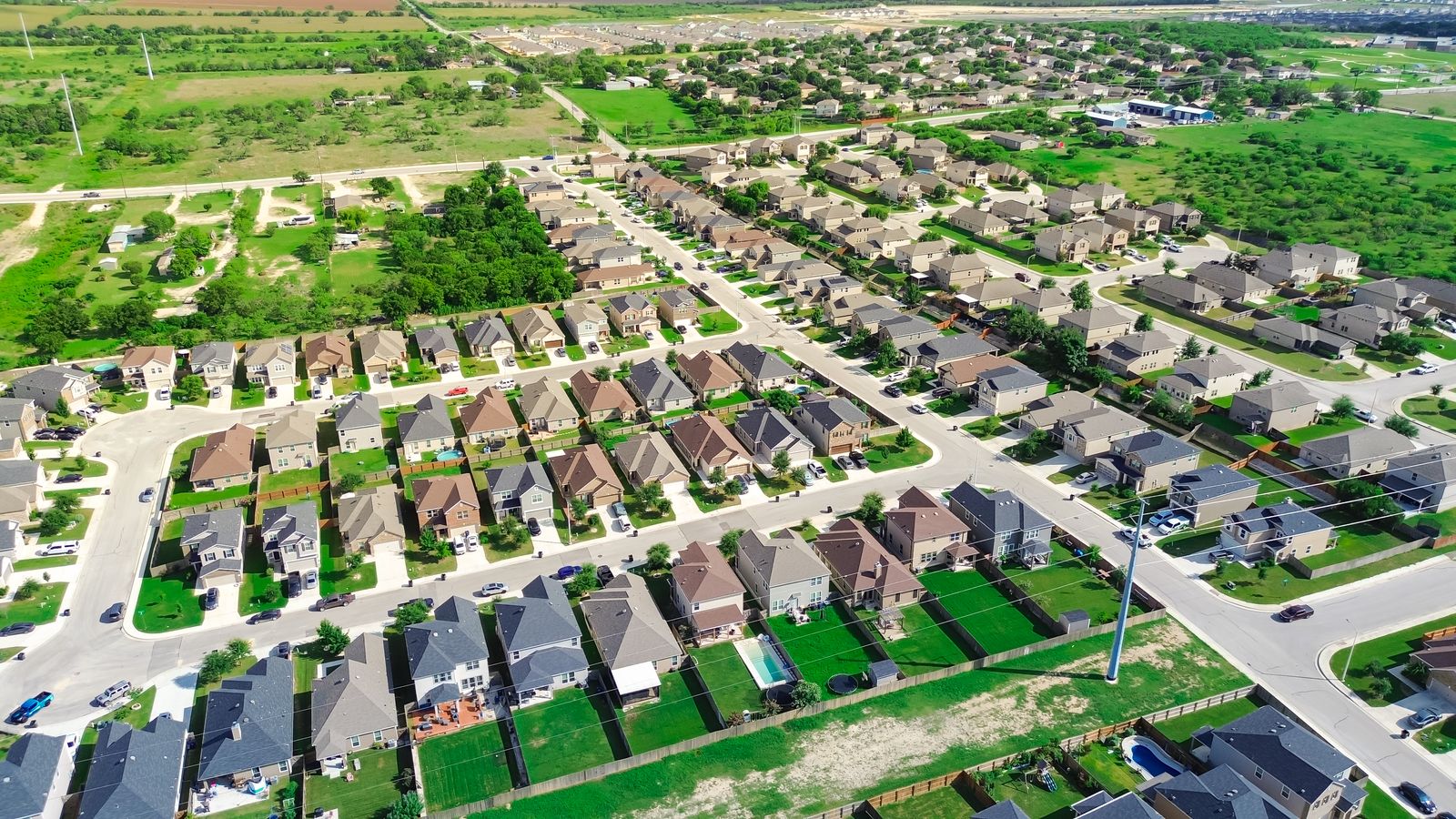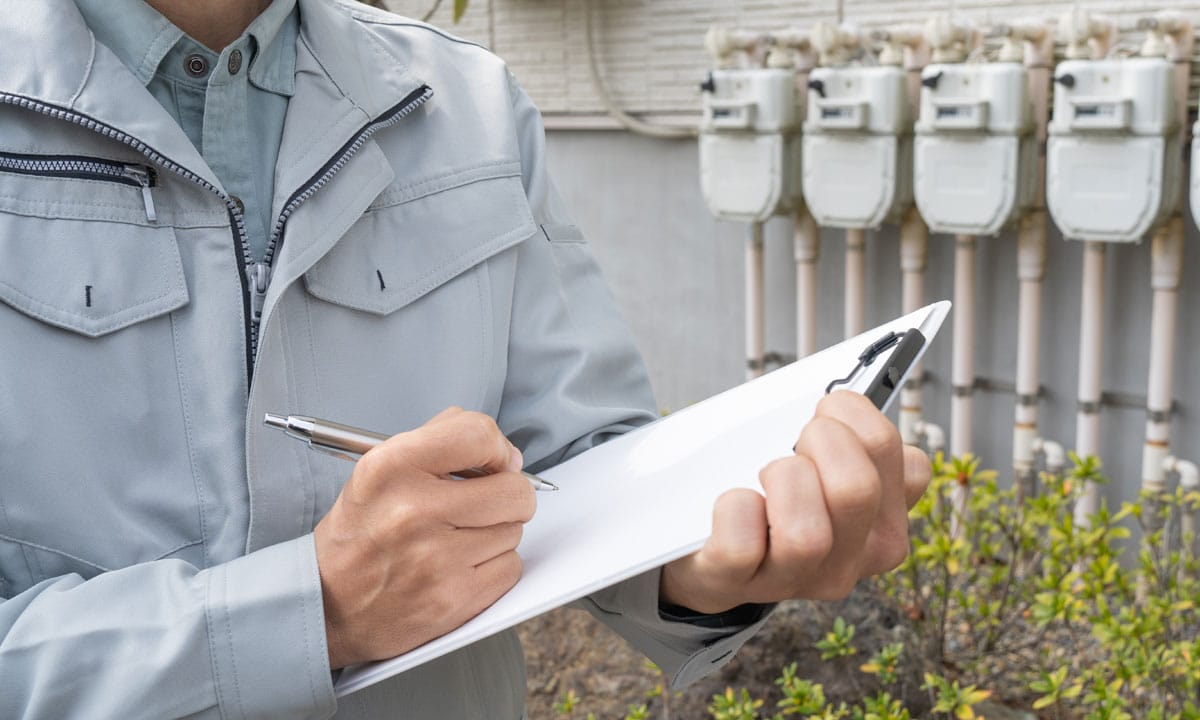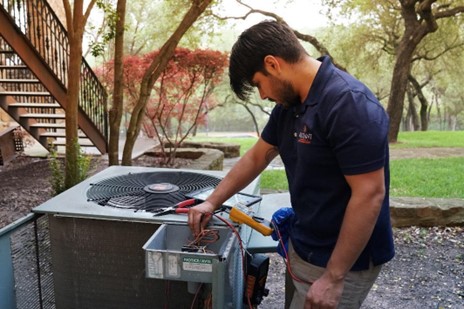When the Texas sun turns relentless—whether you’re brunching in Austin or relaxing in your San Antonio backyard—your air conditioner becomes the unsung hero of your home. So when that refreshing blast of cool air stops, panic can set in fast. One of the most common (and misunderstood) culprits? The AC compressor.
At Radiant Plumbing & Air Conditioning, we recently replaced the compressor in a five-year-old unit in Austin that had stopped working. We refilled it with R-410A refrigerant and got the home cooling like a charm again. But here’s the thing: replacing a compressor isn’t always the best route. And if your air conditioner’s not working, the compressor might not even be the real problem.
Let’s unpack what your AC compressor actually does, how to spot the signs it’s struggling, and why you should always get a professional diagnosis before deciding whether to repair, replace, or upgrade.
What Does an AC Compressor Do, Anyway?
The compressor is often called the “heart” of your air conditioning system—and it’s not just a poetic metaphor. It pumps refrigerant through your system, compressing low-pressure gas into high-pressure gas and propelling it through the coils to cool your home.
If the compressor fails, it’s like your system has lost its heartbeat. The fan may still run, but you won’t get any actual cooling. Without a working compressor, you’re basically just blowing warm air around your home.
Signs Your AC Compressor Might Be in Trouble
Not sure if your compressor is the issue? Here are the top signs it might be failing:
- Warm Air Blowing from Vents – Even with the thermostat set to “cool,” you’re sweating inside.
- Loud or Unusual Noises – Clicking, clanking, or grinding sounds could be internal compressor failure.
- AC Won’t Turn On – A completely unresponsive system may point to electrical failure inside the compressor.
- Tripped Breaker – A faulty compressor can draw too much power, leading to frequent trips.
- Short Cycling – The system turns on and off rapidly, often without completing a full cooling cycle.
Some of these symptoms overlap with other problems—like a bad capacitor, a refrigerant leak, or a clogged filter—which is why it’s essential to call a professional. At Radiant, we don’t jump to conclusions. We inspect the entire system to get to the root of the issue before recommending repairs or replacement.
Compressor Replacement vs. Full System Replacement
Replacing the compressor can make sense if your system is relatively new—like the five-year-old unit we serviced in Austin. But if your AC is over 8 years old, or if it’s out of warranty, replacing just the compressor might not be the wisest financial move.
Here’s why:
- Compressor replacement can be costly—often half the price of a whole new system.
- Older systems use outdated technology, meaning even a repaired unit won’t be as efficient.
- Warranties matter—if your compressor is still under manufacturer warranty, replacement could be covered.
- R-410A phaseout is coming—R-410A refrigerant (which we still use when required) is being phased out in favor of R-32, which is more environmentally friendly and efficient.
We’ll always walk you through the pros and cons so you can make the decision that’s right for your home—and your wallet.
What About the Refrigerant?
In our recent repair, we refilled the system with R-410A. While it’s still widely used and safe, it’s being phased out due to environmental regulations. That means newer systems are being built to run on R-32 or similar next-gen refrigerants.
If you’re facing compressor failure in an older system, it might be time to upgrade. A new system will be more energy-efficient, environmentally friendly, and compatible with future refrigerants—plus, you’ll see the benefits on your energy bills right away.
Don’t Jump to Replacing the Compressor Yet
A failing compressor is a big deal, but it’s not always the final word. At Radiant, we’ve seen it all—systems misdiagnosed with compressor issues when the real problem was a $30 capacitor or a low refrigerant level.
Before you spend thousands on a compressor (or a whole new system), let our licensed HVAC technicians take a look. We’ll do a full diagnostic to figure out exactly what’s going on. No guesswork. No pressure. Just smart, honest advice from a team that knows Austin, San Antonio, and the Hill Country like the back of our wrench-holding hands.
Homeowners Trust Radiant
We’re not just another HVAC company. Radiant Plumbing & Air Conditioning has been serving Texans since 1999 with integrity, transparency, and a touch of personality. We believe in:
- Straight answers – We’ll explain what’s wrong and give you options, not a sales pitch.
- Skilled technicians – Our team is trained to handle the latest systems and refrigerants, from R-410A to R-32.
- 24/7 availability – Whether your AC goes out in the middle of the night or during a Saturday BBQ, we’re here.
- Radiant Care Club – Join our maintenance program and get priority scheduling, discounts, and regular system checkups that help prevent major issues like compressor failure.
Let’s Get to the Bottom of It
If your air conditioner isn’t cooling like it used to, don’t assume the worst—but don’t wait either. A faulty compressor can cause further damage to your system if left unchecked. And in this heat, that’s not a gamble worth taking.
Call Radiant today or schedule online to get fast, honest diagnostics for your AC system. We’ll let you know whether it’s the compressor, the refrigerant, or something else entirely—and help you decide what to do next.
Just Call Radiant
Serving Greater Austin, Greater San Antonio, and all the towns in between—because Texas heat doesn’t play favorites, and neither do we.

